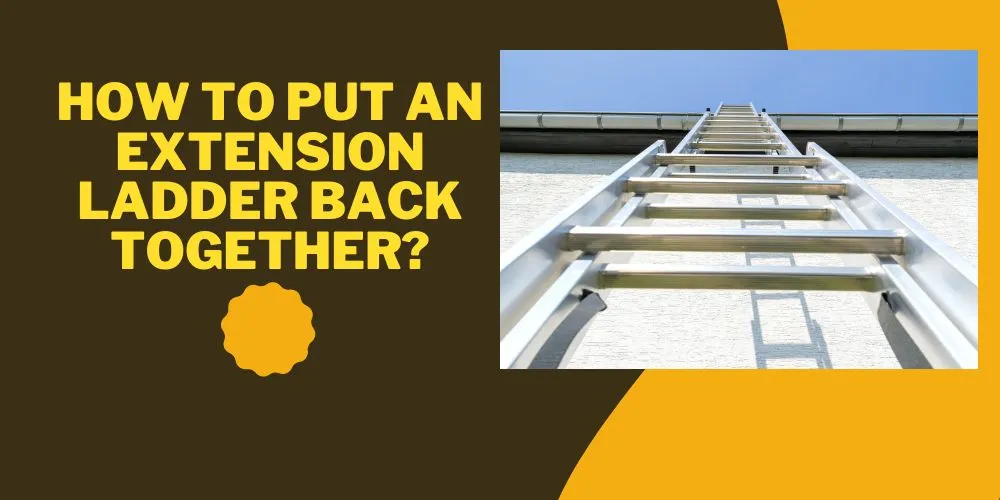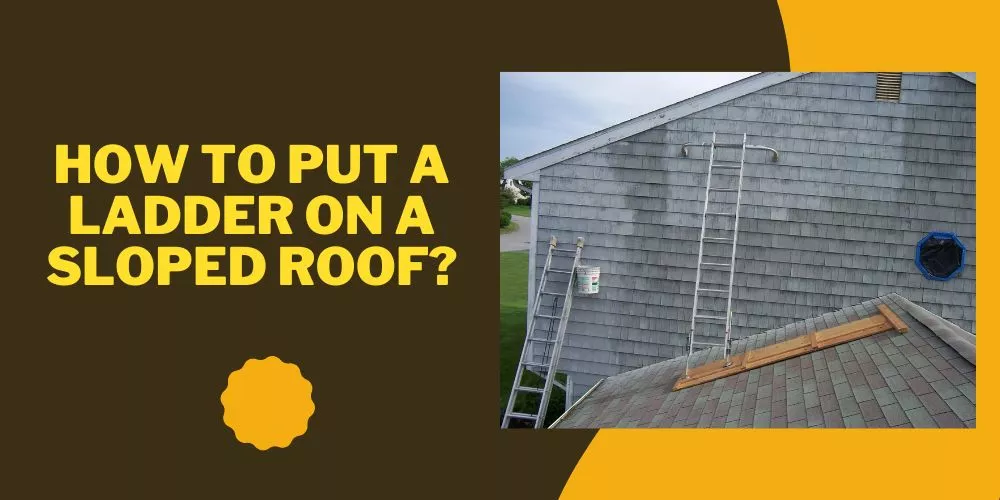Ladder safety is paramount in preventing falls, injuries, and fatalities in both professional and personal environments. Thousands of ladder-related accidents occur each year, often due to improper usage, inadequate inspection, and lack of knowledge.
That’s why I am writing this guide on how to tie off a ladder for safety, so that you can learn it on your own.
In fact, by adhering to ladder safety guidelines and best practices, individuals can significantly reduce the risk of accidents, ensure a stable and secure working platform, and promote a culture of safety awareness.
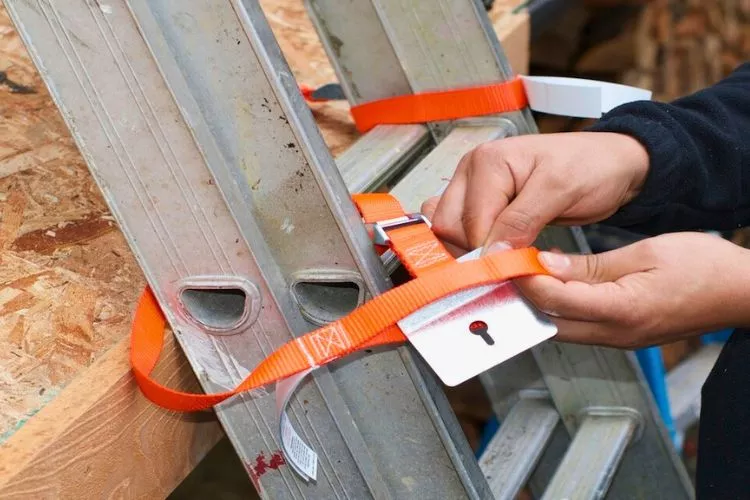
How to tie off a ladder for safety?
- Step 1: Assess the work area:
- Check ground conditions for stability and levelness.
- Ensure there are no overhead obstacles or hazards, such as power lines.
- Step 2: Set up the ladder according to the 4 to 1 rule:
- Place the base one foot away from the supporting structure for every four feet of ladder height.
- Make sure the ladder extends at least three feet beyond the support point.
- Step 3: Choose the appropriate rope:
- Select a durable, weather-resistant rope such as nylon or polyester.
- Ensure the rope is in good condition, without frays or damage.
- Step 4: Tie off the top of the ladder:
- Position the ladder against a fixed, stable support point, such as a sturdy railing or structural beam.
- Use a bowline knot to create a secure loop at one end of the rope.
- Pass the loop around the support point and then through the ladder rung.
- Pull the rope tight to secure the ladder to the support point.
- Step 5: Tie off the base of the ladder (if necessary):
- If the ground is uneven or the ladder may slide, secure the base by tying it to a stable and immovable object.
- Use a clove hitch knot to attach the rope to the ladder’s base.
- Pull the rope tight and ensure the ladder remains stable when weight is applied.
- Step 6: Utilize ladder stabilizers and levelers (if available):
- Attach ladder stabilizers to the top to provide additional support and prevent side-to-side movement.
- Use ladder levelers at the base to ensure the ladder remains stable and level on uneven ground.
- Step 7: Inspect the setup:
- Double-check all knots to ensure they are secure and tight.
- Confirm the ladder is stable and properly positioned before use.
- Step 8: Follow ladder safety best practices:
- Always maintain three points of contact while climbing or working on the ladder.
- Avoid overreaching or overextending; reposition the ladder as needed.
- Wear appropriate footwear and attire for the task at hand.
Following these steps will ensure your ladder is safely tied off and secure, minimizing the risk of accidents and injuries.
Knots for Ladder Safety
Securing a ladder with the right knot is crucial for maintaining safety during ladder usage. The knots mentioned above— the clove hitch, bowline knot, round turn and two half hitches, taut-line hitch, and figure-eight knot—are all excellent options for ensuring your ladder stays in place during your work.
Remember to inspect your knots regularly and adjust them to maintain a safe and stable working environment.
🪜 The Clove Hitch
The clove hitch is a versatile and simple knot that provides a secure grip on the ladder. To tie a clove hitch:
- Wrap the rope around the support structure and cross the working end over the standing part.
- Wrap the working end around the support structure again, but pass it under the initial wrap this time.
- Pull both ends of the rope to tighten the knot for a secure hold.
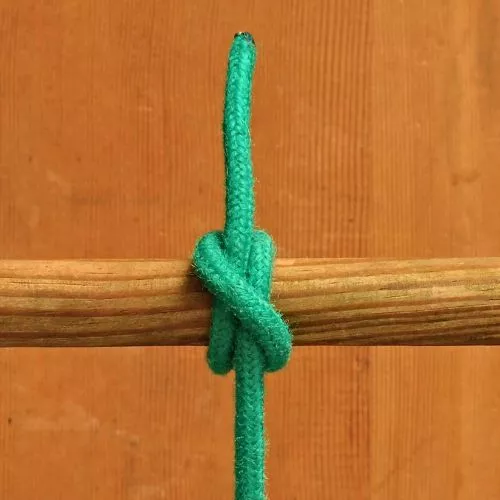
🪜 The Bowline Knot

The bowline knot, often called the “king of knots,” is known for its strength and reliability. To tie a bowline knot, make a small loop in the rope, pass the working end through the loop, wrap it around the standing part, and back through the loop. Pull the knot tight to secure the ladder.
🪜 The Round Turn and Two Half Hitches
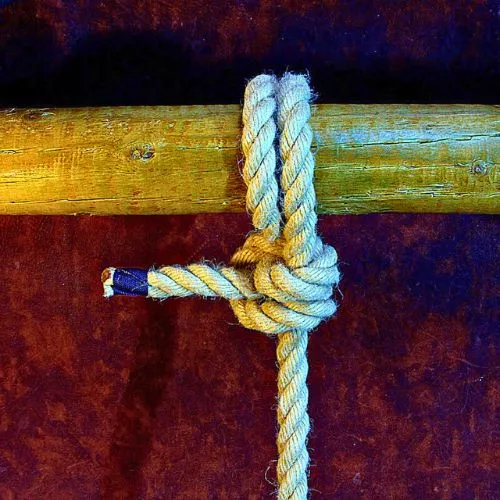
This knot is ideal for securing a ladder to a round or cylindrical support structure. To tie a round turn and two half hitches, pass the rope around the support structure to create a round turn.
Then, pass the working end over the standing part and through the loop to create the first half hitch. Repeat the process to create the second half hitch and tighten the knot.
🪜 The Taut-Line Hitch
The taut-line hitch is an adjustable knot that can be easily tightened or loosened, making it perfect for securing a ladder. To tie a taut-line hitch, wrap the rope’s working end around the support structure, then make two turns around the standing part.
After the second turn, bring the working end back over the initial wraps and pass it under to create a half hitch. Pull the knot tight to secure the ladder.
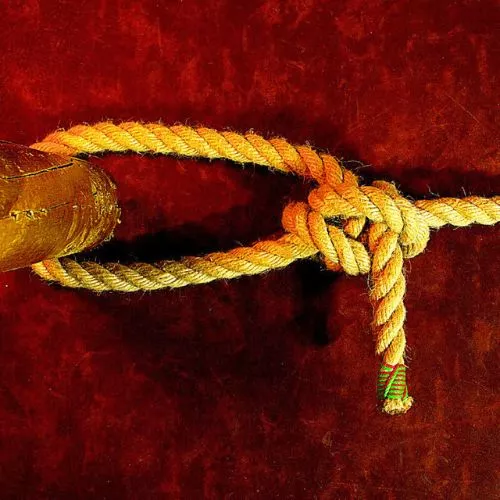
🪜 The Figure-Eight Knot
The figure-eight knot is a strong and secure knot that works well for tying off a ladder. To tie a figure-eight knot, make a loop in the rope, then pass the working end around the standing part and through the initial loop. Pull the knot tight to secure the ladder.
While securing your ladder with knots is essential for safety, there are several other precautions and practices that can further reduce the risk of accidents while using a ladder. These safety measures not only ensure that the ladder stays in place but also promote safer climbing and working conditions.
- Position the Ladder Correctly: Ensure the ladder is placed on stable, level ground. Never place a ladder on soft or uneven surfaces such as grass, dirt, or gravel, as this can compromise its stability. If you’re working indoors, avoid placing the ladder near doorways or areas where people may inadvertently bump into it.
- Ensure Proper Ladder Height: Using a ladder that is too short for the task at hand can lead to dangerous overreaching. Always choose a ladder that provides sufficient height for the job and allows you to comfortably reach your work area without leaning too far. If the ladder doesn’t extend far enough, consider using an extension ladder instead.
- Inspect the Work Area for Hazards: Before setting up the ladder, take the time to inspect the work area for any potential hazards. Check for nearby electrical lines, especially when working outdoors. Ensure that there are no obstructions, such as power cords or furniture, that could cause tripping hazards.
- Secure the Ladder with Stabilizers or Foot Pads: For added stability, use ladder stabilizers or foot pads, especially if you’re working on stairs or uneven ground. Stabilizers widen the base of the ladder, reducing the risk of tipping, while foot pads can prevent the ladder from slipping.
- Climb with Caution: Always maintain three points of contact when climbing or descending a ladder. This means keeping two hands and one foot, or two feet and one hand, on the ladder at all times. Avoid carrying tools in your hands while climbing—use a tool belt or a rope to hoist materials up instead.
By following these safety tips along with the proper knot-tying techniques, you will further ensure that your ladder setup is secure and safe for use, reducing the risk of falls and accidents during your work.
Conclusion:
Ladder safety should never be compromised, and knowing how to tie off a ladder for safety is a crucial skill for anyone working at height.
Understanding the importance of securing a ladder and mastering the knots discussed in this article—the clove hitch, bowline knot, round turn and two half hitches, taut-line hitch, and figure-eight knot—you can significantly reduce the risk of accidents and ensure a safe working environment.

